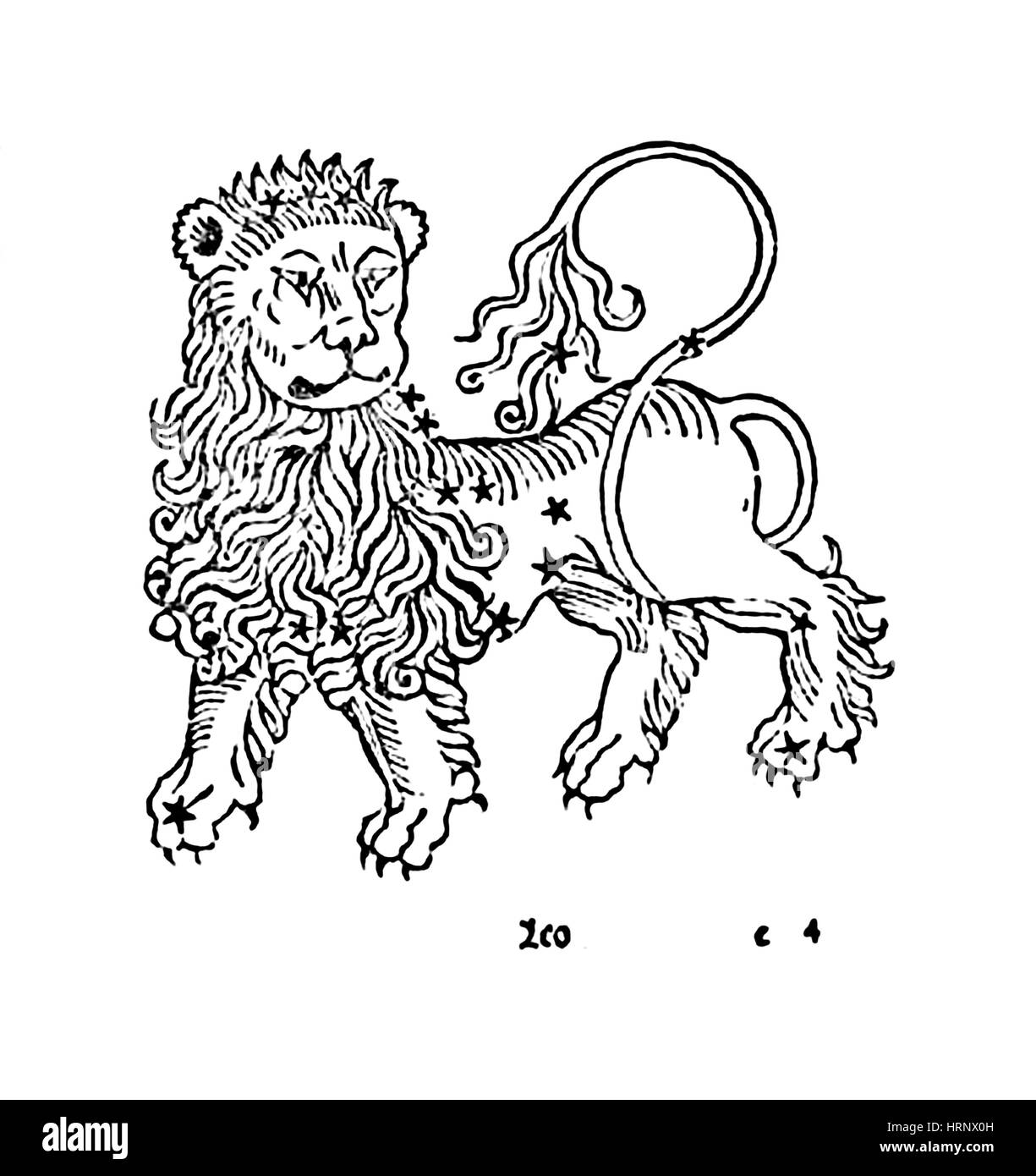Leo Constellation, Zodiac Sign, 1482

Image details
Contributor:
Science History Images / Alamy Stock PhotoImage ID:
HRNX0HFile size:
46.2 MB (578 KB Compressed download)Releases:
Model - no | Property - noDo I need a release?Dimensions:
3900 x 4138 px | 33 x 35 cm | 13 x 13.8 inches | 300dpiPhotographer:
Photo ResearchersMore information:
This image could have imperfections as it’s either historical or reportage.
Leo is one of the constellations of the zodiac. Its name is Latin for lion. One of the 48 constellations described by the 2nd century astronomer Ptolemy, and it remains one of the 88 modern constellations defined by the International Astronomical Union. Leo was one of the earliest recognized constellations, with archaeological evidence that the Mesopotamians had a similar constellation as early as 4000 BC. Leo is the fifth astrological sign of the zodiac, originating from the constellation of Leo. It spans the 120-150th degree of the Tropical zodiac, between 125.25 and 152.75 degree of celestial longitude, which the Sun transits this area on average between July 23 to August 22 each year. Poeticon astronomicon is a star atlas whose authorship is disputed. The work was originally attributed to the Roman historian Gaius Julius Hyginus (64 BC - AD 17). The book lists most of the constellations in the same order as Ptolemy's Almagest (2nd century AD) which has led many to believe that a more recent Hyginus created the text. The Poeticon astronomicon was not formally published until 1482, by Erhard Ratdolt. He commissioned a series of woodcuts, but the relative positions of the stars bear little resemblance to the descriptions given by Hyginus in the text or the actual positions of the stars in the sky.